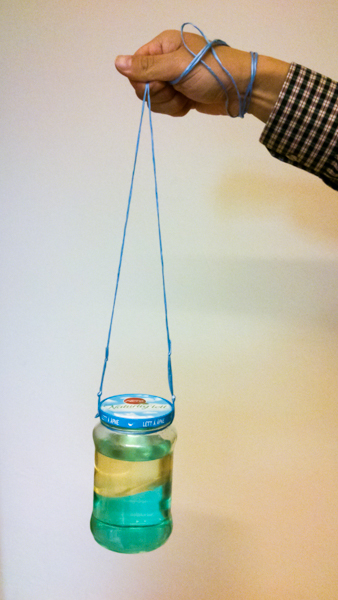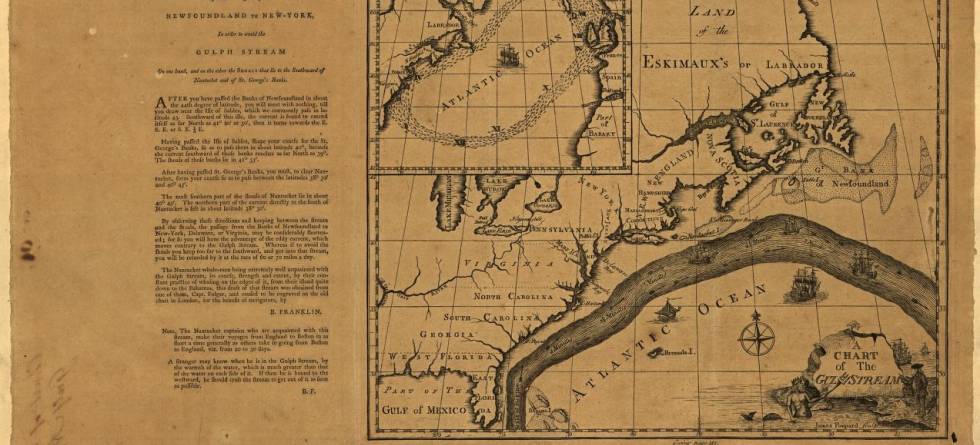
Benjamin Franklin was a bright guy. Not only did he invent the lightning rod, jokingly suggested daylight saving time and helped write the United States declaration of independence. Between 1724 and 1785, he crossed the Atlantic eight times. In those days, such a journey could take a couple of months, but Franklin did not waste his time. He observed and reflected eagerly over everything he experienced. Among other things, he organized the printing of the first map of the Gulf Stream.
Sailing westward to Madeira in 1761, he was annoyed by how the wind from the cabin window made his candles flicker and run. To solve the problem, he made an Italian lamp in an empty glass jar. He filled the lowest one third of the glass with water and the next third of the glass with oil. In the oil, he placed a wick with a little piece of cork to keep it floating. As oil is lighter than water, the oil formed a layer on top of the water. Oil lamps have been in use for thousands of years, so Franklin’s discovery was not the lamp itself.
When the ship began to roll, something happened. Waves formed in the glass jar. Not on the top, the surface of the oil was almost quiet. But at the border between the water and the oil there was a raging storm. What Franklin saw, was internal waves, a phenomenon that also occurs in the ocean when there is a large density difference between two water masses. Such deep-water waves can become as high as 200 meters.
Martin King, who is a researcher at Uni Research and the Bjerknes Centre, has recreated and filmed Franklin’s experiment.
You can find Benjamin Franklin’s own account of the lamp discovery here, together with other letters he sent to his friend, Sir John Pringle.
With a string or wire, Franklin’s lamp could be used as a torch and carried around in the boat. It was practically fire-safe. When the oil had burned out, the flame would be extinguished by the water below.

